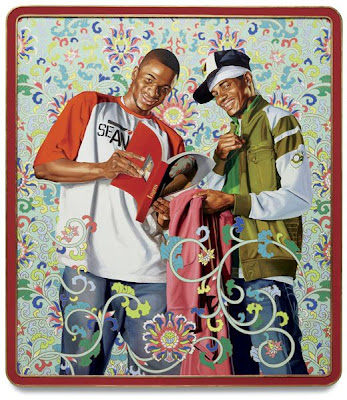 |
| Cloud Gate (2004), Millennium Park, Chicago |
Celebrated for his gigantic, stainless steel Cloud Gate sculpture in Chicago’s Millennium Park, Anish Kapoor is changing the cultural environment with his public works.
1.Research Kapoor's work in order to discuss whether it is conceptual art or not. Explain your answer, using a definition of conceptual art.
According to ‘Conceptual Art' by Tony Godfrey, conceptual art is more about ideas and meanings rather than the forms of or materials. In particular the object of conceptual art becomes unique and collectable because of challenging the tradition.
Kapoor‘s work is conceptual art because the main focus of his work is not just play around the material but focus on the interesting ideas of his work. His concept of his sculpture often has particular meaning and theme.
2. Research 3 quite different works by Kapoor from countries outside New Zealand to discuss the ideas behind the work. Include images of each work on your blog.
ArcelorMittal Orbit tower in the Olympic Park, Anish Kapoor, 2012
Kapoor designed this115-metre-high tower sculpture for £19.1m as the artistic centerpiece of the 2012 Olympic Park.
This work were referencing the Tower of Babel and trying to convey a sense of instability and a tower that could be viewed differently from different parts of the city.
According to London mayor Boris Johnson, he thought that the Olympic Park for the 2012 Olympics needed "something extra" to "distinguish the East London skyline", and "arouse the curiosity and wonder of Londoners and visitors". I think Kapoor's work is more like modern world for the future.

Anish Kapoor, Tall Tree and The Eye, 2009
The steel structure, an arrangement of 76 shiny spheres which bubble up to the level of the surrounding Palladian buildings, is inspired by the words of the German poet Rainer Maria Rilke.
The Kapoor said he is intrigued by the empty spaces between the shapes he has made, and by the endless, repeating "fractal images" reflected on its polished surfaces."Inevitably the shape recalls DNA as a reference, but that is not what it is," he said.

Dirty Corner, Anish Kapoor,2011

Dirty Corner, Anish Kapoor,2011
the sculptural work consists of a huge steel volume that measures 60 metres long and 8 meters high in which visitors can enter. upon entry, one begins to lose their perception of space, as it gets progressively darker and darker until there is no light, forcing one to use their other senses to guide them through the space.
3.Discuss the large scale 'site specific' work that has been installed on a private site in New Zealand.

On The Farm there is no prescribed space to work within. Rather there is an undulating plane, far horizons and a wide sky. In response, Kapoor has nestled the work in a cleft cut into a high ridgeline. With views of the harbour to the west and mountains to the east it is as if he wanted to channel the forces of water, air and rock; and to link the width of the harbour with the height of the hills. The site elevates Kapoor’s work into view, but also makes it impossible to be seen entirely from any one position (other than the air).
Standing close to the 8-storey high work, it's gigantic, mesmerising character kicks in. Composed of a vast PVC membrane stretched between the two giant steel ellipses, it has a fleshy quality which Kapoor describes as being “rather like a flayed skin.” During one of the site's frequent westerly winds it takes on a life beyond what Kapoor could ever achieve indoors.
Kapoor's first outdoor sculpture in fabric, “The Farm”, is designed to withstand the high winds that blow inland from the Tasman Sea off the northwest coast of New Zealand's North Island.Its materials consist of "a custom deep red PVC-coated polyester fabric by Ferrari Textiles supported by two identical matching red structural steel ellipses that weigh 42,750kg each. The fabric alone weighs 7,200kg."
Here Kapoor has realised something transcendent within a large sculptural object. It is architectural in scale yet mysteriously visceral and immediate in character.
http://www.robgarrettcfa.com/content/2009/06/01/the-farm-alan-gibbs
5. Comment on which work by Kapoor is your favourite, and explain why. Are you personally attracted more by the ideas or the aesthetics of the work?
I really like the huge sculpture called Tall Tree and the Eye and the Sky Mirror. Kapoor is good at combine his conceptual ideas wirh actual object using the material steel. I like the way he creating the work for making sense by the reflection of the steel, it makes the work looks modern and future.
Youtube has some excellent footage on Kapoor-take a look at Anish Kapoor at the Royal Academy.
www.royalacademy.org.uk ›
http://www.robgarrettcfa.com/thefarm.htm
http://www.billslater.com/cloudgate/
Youtube has some excellent footage on Kapoor-take a look at Anish Kapoor at the Royal Academy.
www.royalacademy.org.uk ›
http://www.robgarrettcfa.com/thefarm.htm
http://www.billslater.com/cloudgate/
 | ||||||
|














